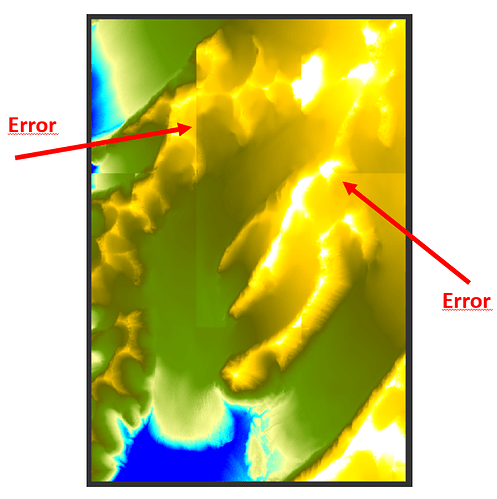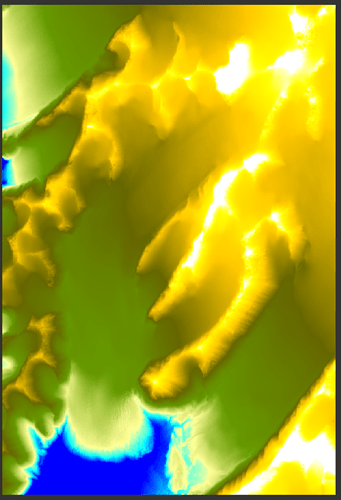**Thanks for reply @gnwiii **
With zero overlap, as you saw, there can be artifacts along edges of adjacent tiles.
Yes but this is in a case that you give tiles more than one (I mean 2,3,5,…10) with overlap zero like here that I used 3 by 3 tiles and zero overlap:
but if you give tiles 1 by 1 and with overlap zero, then there is not artifacts along edges. As you can see in my result here:
The final step computes a “fudge factor” for each tile to improve agreement in the overlap areas.
With zero overlap, the presence of visible edges does provides some insight into the uncertainties, and may be acceptable for some applications. Applications that rely on edge-finding often find tile edges that aren’t obvious in a screen image.
What do you mean with edge-finding? Edge of any tiles or edge of whole unwrapped result?
The OS’s supported by SNAP all provide tools to monitor resource usage. These can help you determine a suitable number of tiles.
Sorry, what do you mean with OS? How it can help to find a suitable number of tiles.
Anyway, my interferogram is ‘2803 by 4126’ and I applied:
10 by 10 tiles and row and column overlap 50
5 by 5 tiles and row and column overlap 100
But both gave me below error:
WARNING: Tile overlap is small (may give bad results)
Then I used:
1 by 1 tiles and row and column overlap 0,
Then it worked but now I do not know can I trust to this result or not? why it did not work with 10 by 10, 5 by 5 but worked with 1 by 1? More tiles means more trust-able result?

